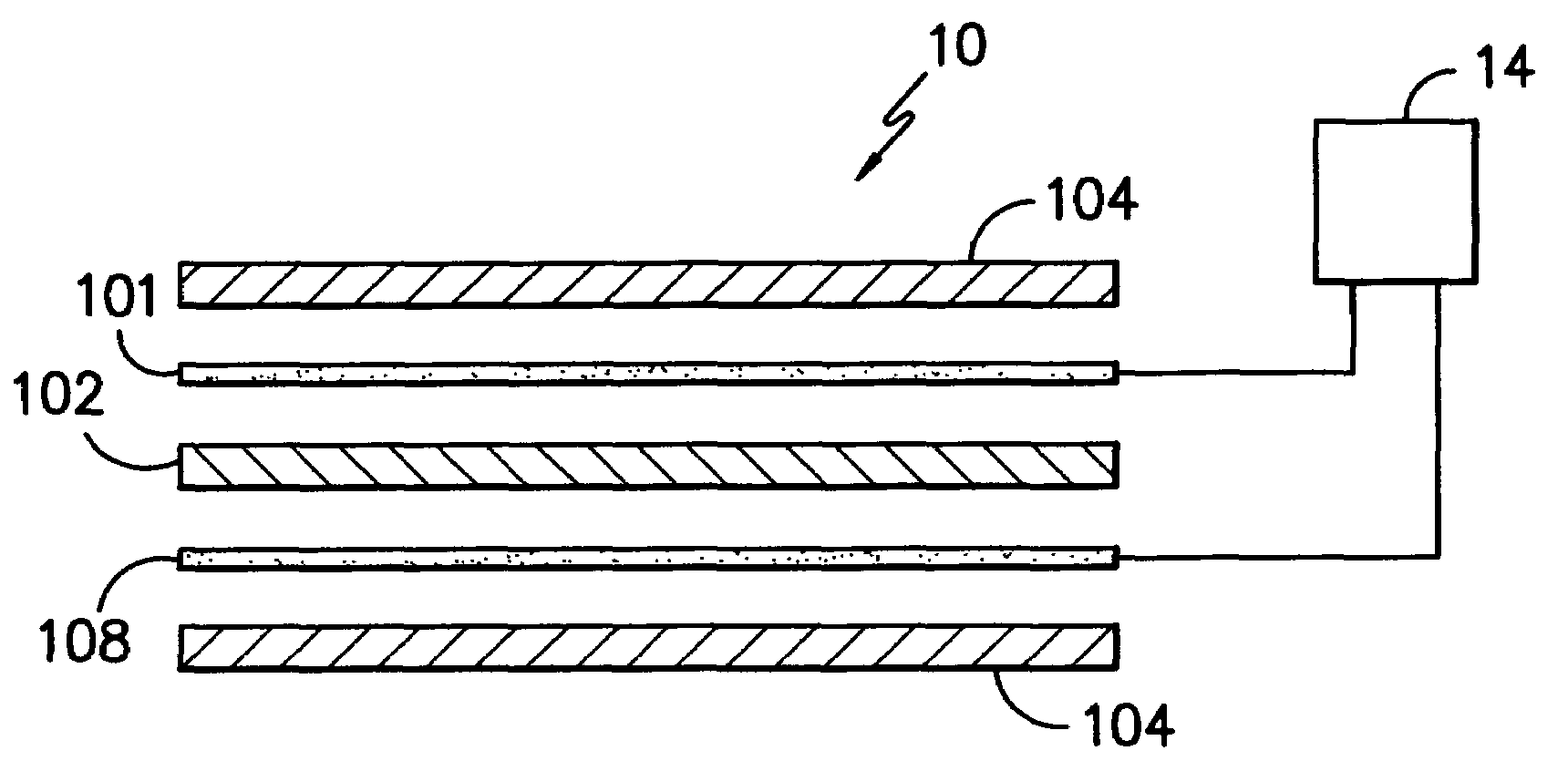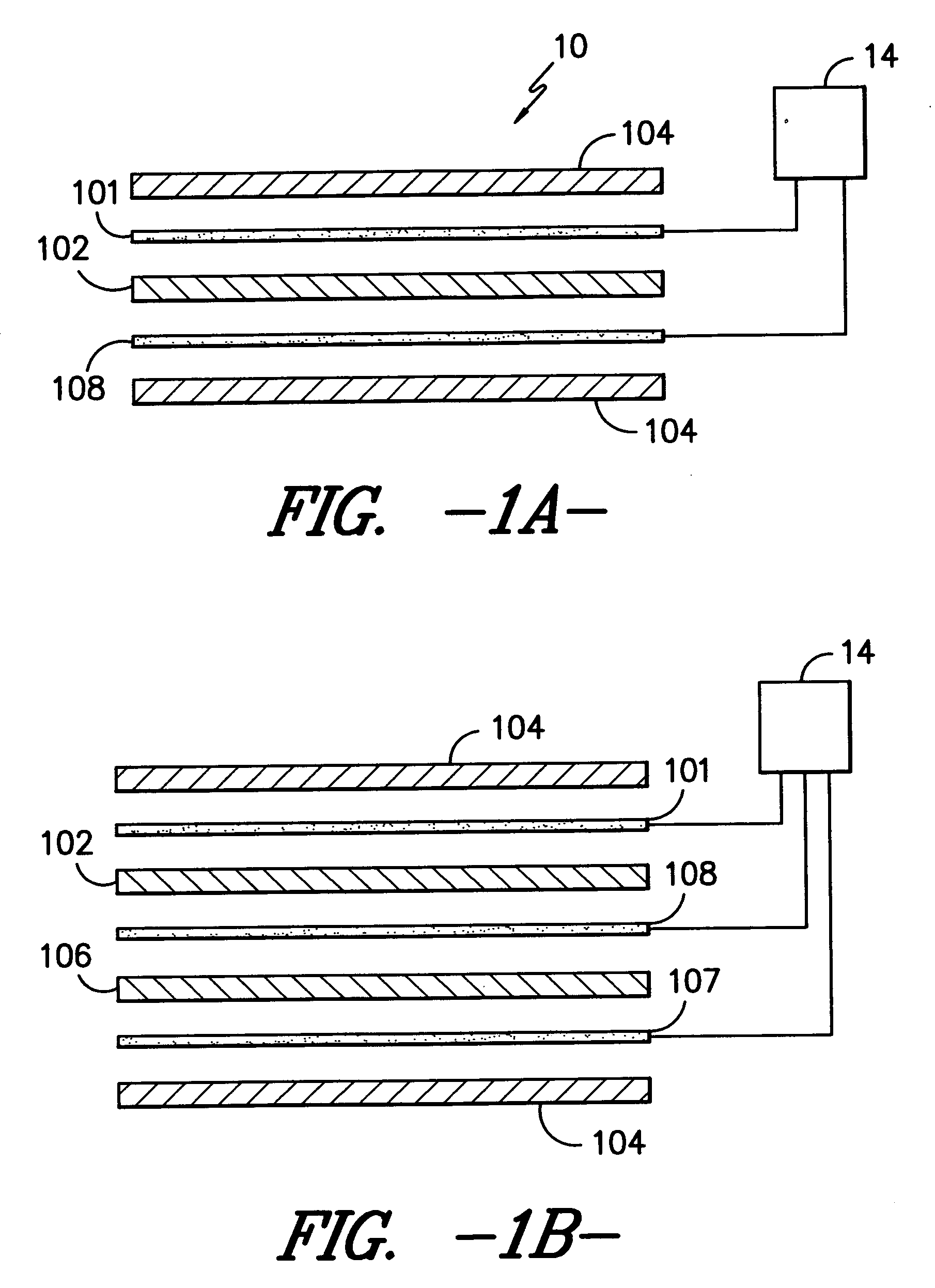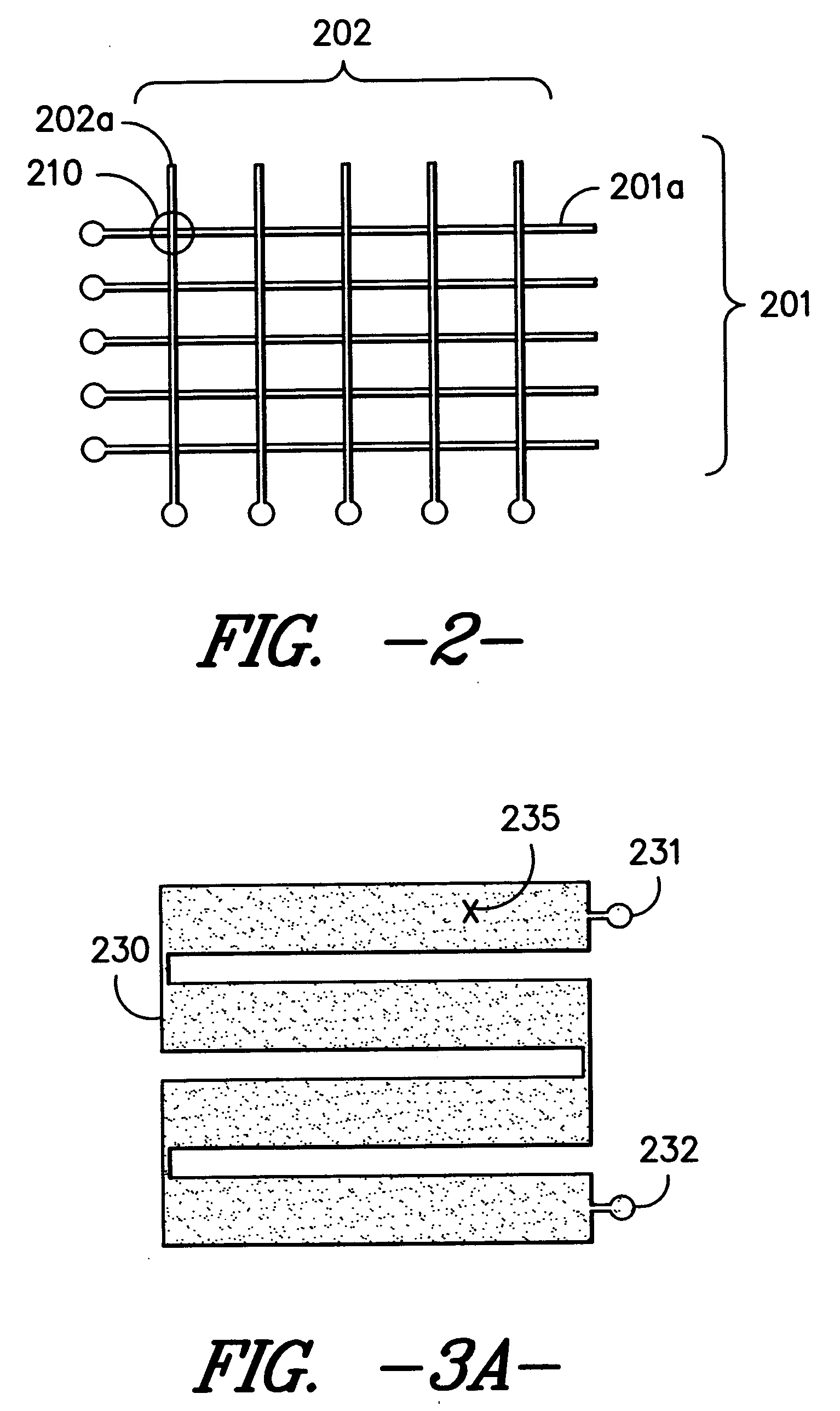Capacitive sensor
a capacitive sensor and capacitive technology, applied in the direction of fluid pressure measurement, pulse technique, instruments, etc., can solve the problems of not teaching a system, capacitive coupling may not be well suited to quantitatively measuring the applied pressure or proximity, and cannot work if, so as to achieve large capacitive sensor array, large fabric, and quick and easy connection
- Summary
- Abstract
- Description
- Claims
- Application Information
AI Technical Summary
Benefits of technology
Problems solved by technology
Method used
Image
Examples
Embodiment Construction
[0030]The flexible capacitive sensor experiences a change in capacitance upon the application of force sufficient to compress the sensor. The amount of applied force, up to a point, is related to the extent of the change in capacitance. In an alternate embodiment, the resistance is also measured to determine the location of user interaction on the sensor. A capacitance meter monitors the present flexible capacitive sensor to determine whether there has been a change in capacitance and the extent of that change.
[0031]Referring now to FIG. 1A shows one embodiment of a capacitive pressure sensor 10 which generally includes a first conductive layer 101, a flexible, resilient dielectric layer 102, and a second conductive layer 108. The capacitive pressure sensor 10 may also include a protective layer 104 on one or both sides of the sensor 10. The first conductive layer 101 and the second conductive layer 108 are electrically connected to the capacitance meter 14.
[0032]In one embodiment o...
PUM
| Property | Measurement | Unit |
|---|---|---|
| angle | aaaaa | aaaaa |
| angle | aaaaa | aaaaa |
| resistance | aaaaa | aaaaa |
Abstract
Description
Claims
Application Information
 Login to View More
Login to View More - R&D
- Intellectual Property
- Life Sciences
- Materials
- Tech Scout
- Unparalleled Data Quality
- Higher Quality Content
- 60% Fewer Hallucinations
Browse by: Latest US Patents, China's latest patents, Technical Efficacy Thesaurus, Application Domain, Technology Topic, Popular Technical Reports.
© 2025 PatSnap. All rights reserved.Legal|Privacy policy|Modern Slavery Act Transparency Statement|Sitemap|About US| Contact US: help@patsnap.com



